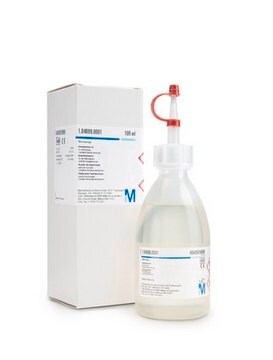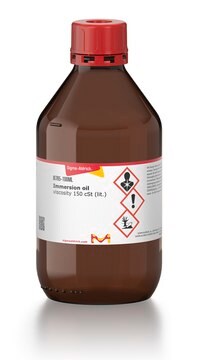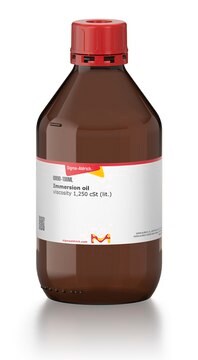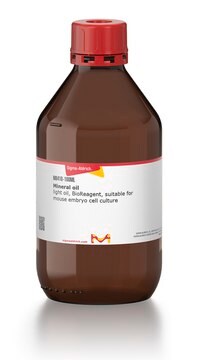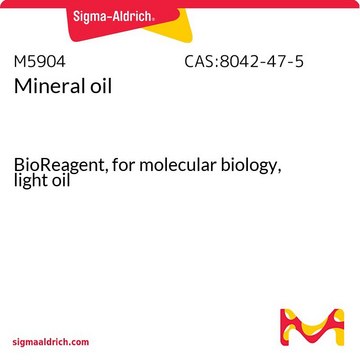추천 제품
생물학적 소스
synthetic
Quality Level
양식
liquid
refractive index
n20/D 1.516
점도
100-120 mPa.s(20 °C)
density
1.025 g/mL at 20 °C
적합성
suitable for microscopy
응용 분야
hematology
histology
저장 온도
room temp
유사한 제품을 찾으십니까? 방문 제품 비교 안내
일반 설명
Immersion oil is a clear, viscous liquid with optimized refractive properties, specifically modified to closely approximate the refractive index (RI) of glass (ne = 1.5). It is used in conjunction with an objective lens to enhance the resolving power.
애플리케이션
Immersion oil is used for high-resolution (1000X) light microscopy work in conjunction with an oil immersion objective lens to optimize microscopic examinations of histological, cytological, hematological, and bacterial specimen material after it has been fixed, embedded, stained, or counterstained, and mounted.
원리
Immersion oil is applied dropwise to stained and mounted or non-mounted specimen material to form a clear film between the specimen and the microscope lens to eliminate the deflection of incident light and thus substantially enhance the optical efficiency of the lens.
신호어
Warning
유해 및 위험 성명서
예방조치 성명서
Hazard Classifications
Aquatic Acute 1 - Aquatic Chronic 2
Storage Class Code
10 - Combustible liquids
WGK
WGK 2
Flash Point (°F)
Not applicable
Flash Point (°C)
Not applicable
개인 보호 장비
Eyeshields, Gloves, type ABEK (EN14387) respirator filter
Theis Sommer et al.
Scientific reports, 8(1), 13104-13104 (2018-09-01)
The catalytic mechanism of the cyclic amidohydrolase isatin hydrolase depends on a catalytically active manganese in the substrate-binding pocket. The Mn2+ ion is bound by a motif also present in other metal dependent hydrolases like the bacterial kynurenine formamidase. The
P L Appleton et al.
Journal of microscopy, 234(2), 196-204 (2009-04-29)
Visualizing overall tissue architecture in three dimensions is fundamental for validating and integrating biochemical, cell biological and visual data from less complex systems such as cultured cells. Here, we describe a method to generate high-resolution three-dimensional image data of intact
Thomas P Burghardt et al.
Applied optics, 48(32), 6120-6131 (2009-11-12)
Total internal reflection fluorescence (TIRF) microscopy uses the evanescent field on the aqueous side of a glass/aqueous interface to selectively illuminate fluorophores within approximately 100 nm of the interface. Applications of the method include epi-illumination TIRF, where the exciting light
자사의 과학자팀은 생명 과학, 재료 과학, 화학 합성, 크로마토그래피, 분석 및 기타 많은 영역을 포함한 모든 과학 분야에 경험이 있습니다..
고객지원팀으로 연락바랍니다.